




 |
   |
 |
The Kinks (UK) see: |
 |
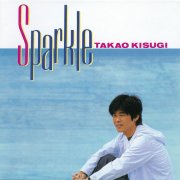 |
Sparkle (1981, 49.14) **/T |
|
| Much More... Easy Drive Memori Merodi Goodbye Day Yumenohada Tasogare no Ichigo Sparking Head Good Luck My Girl |
Kehai Madobe no On'na (Hito) Yukkuri Natsu ga Koraju Much More... |
|
Current availability:
Mellotron used:
After working with Yosui Inoue, Takao Kisugi went solo in 1976, '81's Sparkle being something like his fourth release. Sad to say, it's an album of thoroughly mainstream ballads, the odd upbeat effort (Easy Drive, Yumenohada) doing little to liven things up. There are no best tracks.
An unknown keyboard player gets a little Mellotron in, with flutes on brief opener Much More... and on its reiteration that closes the album. Do you really want to hear this? It's on YouTube.
 |
Soldier Blue (2003, 10.16) ***½/TT½Soldier BlueMarvin Impulser |
 |
Jesus (2004?, 14.49) ***½/TTJesusMake Over Leaving |
Current availability:
Mellotrons used:
Sweden's Kit Le Fever have, confusingly, named themselves after a bit-part actor who had a few roles in the '80s, which probably seems like a long time ago if you're young (he said, bitterly). Like so many artists involved with Änglagård's Mattias Olsson, they have a melancholy, Scandinavian air about them, mixed with a noise æsthetic that rears its ugly head occasionally. Now, I don't believe either of these EPs has ever been commercially available, but three of the tracks were available for download from Mattias' studio site and may still be floating around in the ether.
The first of these, probably called Soldier Blue (you can see how vague all this is, can't you?), opens with a typically melancholy title track, after which Marvin is rather more raucous, opening with a punchy bass line, leaving Impulser as another beautiful downer. I suspect Mattias plays the Mellotron, with cellos and strings (and maybe choir) on the title track and flutes and pitchbent strings on Impulser. Their next three-tracker, probably entitled Jesus, probably came out the following year (lots of 'probablys' here). All three tracks have raucous elements, possibly mixing these with their melancholy side more effectively than before. Make Over features cellos, flutes and strings in an almighty Mellotronic mélange, with more strings on Leaving, although Jesus is probably the demo's highlight.
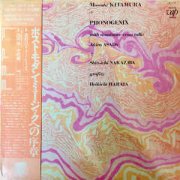 |
Prologue for Post Modern Music (1984, 38.50) ***½/T½Variation IVariation II Variation III Variation IV The Final Autumn in Asia... Psychic Document for 1982 |
Current availability:
Mellotron used:
Masashi Kitamura (later of Ybo²) and Photogenix made just the one album together, 1984's Prologue for Post Modern Music, an experimental, synth-led release sounding little like the Berlin School. Sparse sequencer lines (yes, folks, a DX-7 can sound good in the right hands), even sparser percussion and occasional fiery guitar; think: the more ambient end of Japan and you won't be too far off the mark. Highlights? The side-long The Final Autumn In Asia... Psychic Document For 1982 and (for reasons outlined below) Variation IV.
Shingetsu's Akira Hanamoto plays Mellotron on Variation IV, with a flute melody, chordal strings and an underpinning cello, foreshadowing Kitamura's work in Ybo². To my knowledge, this isn't on CD (why?), but YouTube have stepped in, allowing us to hear this unusual, forward-looking album.
See: Ybo²
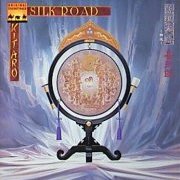 |
Silk Road (1980, 42.10) ****/T |
|
| Silk Road Theme Bell Tower Heavenly Father The Great River The Great Wall of China Flying Celestial Nymphs Silk Road Fantasy Shimmering Light |
Westbound Time Bodhisattva Everlasting Road |
|
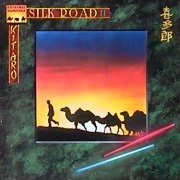 |
Silk Road II (1980, 43.13) ****/TT½ |
|
| In the Silence Takla Makan Desert Eternal Spring Silver Moon Magical Sand Dance Year 40080 Time Travel Reincarnation |
Dawning Tienshan |
|
 |
Kitaro in Person Digital (1980, 46.04) ****/TTTT |
|
| Prologue Eternal Spring Westbound Silver Moon Peace Bell Tower Morning Prayer Tienshan |
Four Changes Magical Sand Dancing |
|
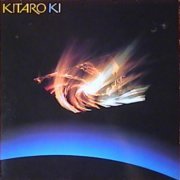 |
Ki (1981, 44.10) ****/TTTRevelationStream of Being Kaleidoscope Oasis Sun Endless Water Tree Cloud in the Sky |
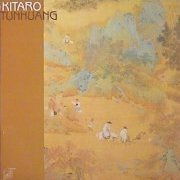 |
Tunhuang (1981, 42.55) ***½/TLord of the WindFata Morgana Sacred Journey I Lord of the Sand Tunhuang Free Flight Mandala Tao Sacred Journey II |
Current availability:
Mellotrons used:
Masanori "Kitaro" Takahashi had been around since the mid-'70s drumming with the Far East Family Band, but broke away to start his solo career as a synthesist in what has unfortunately come to be known as the 'new age' field. In all fairness, his best work is well above the 'elevator music' of most of the genre's exponents, although he hasn't produced anything of any great interest for many years now. His discography's as confusing as that of many Japanese artists, one notorious website claiming that many of his albums were released anything up to two years before they were recorded. Yes, well...
His best-known work to this day is probably the music he produced for the epic Silk Road TV series, which followed the old silk route across Asia, covering the various areas' history, geography etc. His fourth album (I think), 1980's Silk Road, is marvellous 'relaxing' music, perfectly suited to its role as background soundtrack stuff, while also having just enough substance to make it listenable in its own right. Despite listing twelve tracks, the album effectively consists of two seamless side-long pieces, track divisions only apparent due to changes in mood. Apart from the ubiquitous synths and percussion, Kitaro plays 'Mellotrone' (male voice?) choirs on only two definite tracks, though there could be more hidden in the mix. Silk Road II, from later the same year is more of the same, throwing Mellotron strings into the mix, along with the choirs, heard to good effect on In The Silence and Magical Sand Dance.
Recorded in the September of that year, Kitaro in Person Digital was his third album of 1980, capturing him live in Tokyo with a band, now notable for the inclusion of a young Ryo Okumoto on synths and Mellotron, (much) later of Spock's Beard. Kitaro plays Mellotron, too, the album benefiting from a more 'live' sound, although there isn't a note out of place, or any applause, which makes you wonder quite how much studio polishing may have been done. The standout Mellotron track is Magical Sand Dancing, with dirty great slabs of (quite raw) strings and choir all over the place, although all highlighted tracks have worthwhile use, flutes cropping up occasionally, too.
The Mellotron is slightly thinner on the ground on '81's Ki, although there are prominent strings on opener Revelation and Sun, plus flutes and choirs here and there. Kitaro's formula was already well-worn by this time, with little real variation between most of his albums, but he seemed (and still seems) to be onto a winner and he's remained more palatable than most of his rivals, although that seems rather too strong a word to use in such a gentle genre. Tunhuang seems to be another in the Silk Road series - I believe there's a fourth album as well, though I don't know which one it is. It's the same old stuff, though maybe a little blander; to my knowledge, it's also his last Mellotron album, with strings and choir on Mandala and possible choirs on Lord Of The Wind; it's fairly obvious he was winding it down, even then.
Playing five Kitaro albums in a day is actually slightly mind-numbing; it's all very pleasant, but the essential blandness of his style makes it difficult to actually listen to the music, as against simply hearing it. I believe there's another live, Japanese-only album from around 1981, but if it's World of Kitaro, recorded with the London National Philharmonic Orchestra, the chances of his having used a Mellotron on the night are utterly minimal.
See: Far East Family Band | Ryo Okumoto
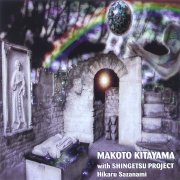 |
Hikaru Sazanami (1998, 42.19) ***½/TTBudokanBlue Heels of Boots Weekends Akane Sasu Heart of Stone Hikaru Sazanami |
Current availability:
Mellotron used:
Makoto Kitayama was vocalist and head honcho with late-'70s Japanese proggers Shingetsu, who also had an album of odds'n'sods released under the name Serenade. After Shingetsu's demise, he recorded a couple of poorly-received demos, causing him to quit the music business for a good decade, until the CD issue of a couple of Shingetsu albums and the aforementioned Serenade title. Having had his interest revitalised, he finally came up with an album's-worth of new material in 1998 under the above name.
Hikaru Sazanami, which sounds like someone's name, though I have no idea whose, is a bit of a mixed bag, if not exactly a curate's egg. The tracks were all recorded between 1996 and '97, although they were written any time between 1972 and '96 and include unrecorded Serenade and Shingetsu material. The album consists of a full-on prog piece at either end, a more modern proggish effort next track in and three shorter vocal/piano/string quartet songs in the middle that could possibly have been single material with different arrangements. Although Blue and, to a lesser extent, Heart Of Stone are quite reasonable prog pieces, it's only really Budokan and the title track that concern us here.
I would guess that Budokan is named after the famed Tokyo concert hall (it translates to something like 'martial arts hall'), but it's the album's one full-on Mellotron track. The sleevenotes state that they'd started by recording it with Mellotron samples, then decided that nothing but the real thing would do (more of this attitude, please!), at which point someone called Haneda 'found one in the back of his house'. As you do. I mean, how many people just happen to have a forgotten Mellotron lying around? Anyway, it sounds great, with strings splattered all over the track in true scattergun style by Kazuto Shimizu, reminding one rather of King Crimson in places, not least because of Haruhiko Tsuda's Frippish guitar style. There's more strings towards the end of Hikaru Sazanami itself, but that's yer lot, I'm afraid.
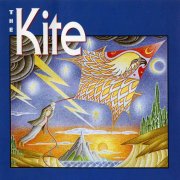 |
The Kite (1991, 47.57) ***/½ |
|
| Days of Youth The Road of Hope These Four Walls Peculiar Donna Raging Sea Breaking Point Diamonds to Dust World of Lies |
Masquerading Pages Turn |
|
Current availability:
Mellotron used:
The Kite, from Toronto, played a highly commercial variety of progressive rock, not unlike sometime Yes member Billy Sherwood's World Trade, combining AOR hooks with intricate instrumental work on 1991's The Kite, produced by Rush collaborator Terry Brown. Squirming in horror already? Fair point, but this is actually an awful lot less, er, awful than that description might suggest, although those allergic to 4/4, major keys and heinous synth patches may wish to go elsewhere. Best tracks? Opener Days Of Youth, These Four Walls and Breaking Point, while Masquerading sounds like Saga, for better or worse.
Keys man Bryan Vamos plays real Mellotron (whose?) on Breaking Point, with a lush, chordal string part in the quiet middle eight, although, sadly, that seems to be our lot. Y'know, for all its failings and a grande helping of fromage, this album has a certain joie de vivre missing from many of its more earnest competitors.
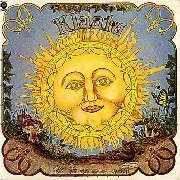 |
3:47 EST [a.k.a. Klaatu] (1976, 36.46) ***½/TTCalling Occupants of Interplanetary CraftCalifornia Jam Anus of Uranus Sub-Rosa Subway True Life Hero Doctor Marvello Sir Bodsworth Rugglesby III Little Neutrino |
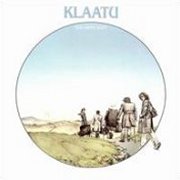 |
Sir Army Suit (1978, 35.57) ***/T |
|
| A Routine Day Juicy Luicy Everybody Took a Holiday Older Dear Christine Mister Manson Tokeymore Field Perpetual Motion Machine |
Chérie Silly Boys |
|
 |
Sun Set: 1973-1981 (2005, 152.19) ***½/T½ |
|||
| Hanus of Uranus Sub Rosa Subway Cherie Doctor Marvello For You Girl California Jam True Life Hero Calling Occupants Sir Bodsworth Rugglesby III Little Neutrino We're Off You Know |
Around the Universe in 80 Days Madman Long Live Politzania The Loneliest of Creatures Prelude So Said the Lighthouse Keeper Epilogue Hope A Routine Day Juicy Luicy Everybody Took a Holiday Day |
Older (live) Dear Christine Mister Manson Tokeymor Field (demo) Sir Rupert Said Sell Out, Sell Out (demo) Howl at the Moon (demo) I Can't Help it Paranoia (demo) Set the World on Fire (demo) Dog Star (demo) |
All Good Things (demo) There's Something Happening I Don't Wanna Go Home (demo) At the End of the Rainbow December Dream Mrs. Toad's Cookies Magentalane Ambrose Lightship |
|
Current availability:
Mellotrons used:
As you probably know, Klaatu (after the robot in The Day the Earth Stood Still) caused a minor furore when their debut, 3:47 EST appeared in 1976, as the music press decided it was The Beatles. The evidence? Slim, to be honest. Beatlesy intelligent pop, with a singer who sounded a lot like Paul, no musicians' credits or pics on the sleeve, a general air of mystery, not to mention that selfsame robot appearing on a Ringo album cover... Of course, it didn't take long for the truth to emerge; they were a Canadian trio who just happened to sound a bit like The Beatles and who favoured anonymity. I don't believe there was ever any attempt to deceive; hardly their fault if people got the wrong end of the stick, was it?
Anyway, 3:47 EST [a.k.a. Klaatu] does that mid-'70s semi-progressive pop/rock thing very well indeed, even though it spawned a Cover From Hell in the awful Carpenters' version of its opener, Calling Occupants Of Interplanetary Craft. And no, I don't subscribe to the theory that Richard and Karen are so out they're in, or whatever. The original, however, is really quite nice and less 'rock' than tracks like Anus Of Uranus and True Life Hero. According to their website, Dee Long plays the Mellotron on Calling Occupants, with shedloads of strings, flutes, cellos and choir, while John Woloschuk adds more of the same to Doctor Marvello. There are real strings here, too, on Sir Bodsworth Rugglesby III and others, but the two Mellotron Tracks are most definitely that.
There's nothing on the following year's Hope (***½), but third time round, Sir Army Suit, is something of a return to the band's roots, sadly without any killer songs. It's something of a mixed bag, to be honest, chopping and changing between styles with bewildering regularity and is rather harder to recommend than their earlier work. Two Mellotron tracks, with flutes under real strings on opener A Routine Day and a little strings pitchbend work on Silly Boys, but that would seem to be it.
Over two decades after the trio's dissolution, the two-disc Sun Set: 1973-1981 appeared in 2005, comprising previously unreleased versions of material from all four Klaatu albums, plus outtakes. The jewel in the crown for fans of the band is undoubtedly the original, orchestral mix of the Hope album, other highlights including a handful of previously-unreleased tracks plus early, single versions of tracks from their debut. Playing the set sequentially shows how their songwriting changed over the course of eight years, the later material, sadly, faring badly in comparison to the earlier. I'd hoped for another Mellotron track or two, but the three on the set are three of the four on the two studio albums above, with no obvious changes in arrangement.
See: Terry Draper
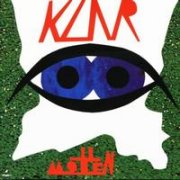 |
Motten (1995, 56.33) ***/TT |
|
| Einleitung Mali SATO Píse Ň Gichtattacke Hatajoga Drei Idioten You Can Do What You Can |
Intermezzo Oh, it's No Difference Ibenbach Green White Ghost |
|
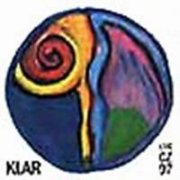 |
Live CZ (1997, 64.58) ***/T |
|
| I Got the Wheel Drum Circle Silent Waves Schweinebeat Generator Keep Smiling Sand - Heat The Rain Keeps Falling Klik - Klak Hönen |
Feuertanz Should Do That Cold Trapping Check Out the Fear I Check Out the Fear II |
|
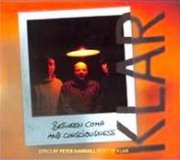 |
Between Coma & Consciousness (2002, 54.21) ***/T½ |
|
| Now More Than Ever She Wraps It Up Firebrand Patient The Birds What's It Worth Wondering |
Tapeworm I Once Wrote Some Poems |
|
Current availability:
Mellotrons used:
Klar were a Czech psychedelic trio, whose debut, 1995's Motten, is as schizophrenic a release as you're likely to encounter all year, shifting between the near-dissonance of opener Einleitung, the African (er, Malian?) chants of Mali, SATO's Farfisa-driven early Floyd vibe and the twin-acoustic attack of Píse Ň and that's just the first four tracks. Drums/keys man Volkmar Miedtke plays Mellotron, with a flute melody running right through Einleitung, high-end cello on Mali, an upfront, semi-dissonant string part on Gichtattacke, interweaving flute lines on Hatajoga and more flutes on Intermezzo, all clearly real.
1997's Live CZ sounds little like a live album to me, with not only no audience noise, but too many audible parts for a trio, unless sequencers were used. It's a more improvisational effort than Motten, faintly resembling '80s King Crimson in places, while Should Do That heavily echoes Hawkwind's You Shouldn't Do That, from 1971's seminal In Search of Space. Miedtke adds Mellotron to just one track, with a blaring string part on closer Check Out The Fear II, once again sounding choppy enough to be real.
The band subsequently split, only to reconvene one last time for 2002's Between Coma & Consciousness, a less cohesive effort than its predecessor, although tracks like Firebrand and The Birds are up to standard. Miedtke on Mellotron again, with a brief string part at the end of Firebrand, more of the same on Wondering and Tapeworm and full-on string and cello parts opening closer I Once Wrote Some Poems, although it's mostly rather low-key.
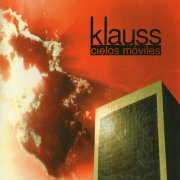 |
Cielos Móviles (1997, 71.55) ***½/T |
|
| Juego de las Estatuas... ...Sala de los Espejos Consagración Kirie Tracto Planicies Arribo Desplazamiento |
Principio del Camino Acuario parte 1 Acuario parte 2 Acuario parte 3 Acuario parte 4 Cielos Móviles |
|
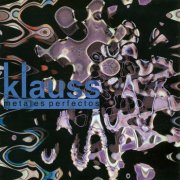 |
Metales Perfectos (2000, 120.54) ***/½ |
|
| Oscilaciones Espléndidas Las Bikinis Asesinas Conspiración Molecular Blau Metales Perfectos Nocturno Colados en la Disco Julio en el Ring |
Nosferatu, el Vampiro Movimiento Recíproco Estacionarias Klaussrock Si/No |
|
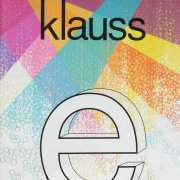 |
e (2009, 79.32) ***/½ |
|
| 3 - 3 Zo ChLL MP4 Lietuva Cs Dos Lados El Narrador parte 1 |
Azulado Tecnoconvivencia Coloración El Narrador parte 4 |
|
Current availability:
Mellotrons used:
Klauss are a Buenos Aires-based electronic outfit, active since the late '80s, whose remit seems to be well-constructed instrumental pieces with a Berlin School sound, differentiating them from the morass of by-numbers Tangs copyists. 1997's Cielos Móviles was their debut release, predictably overlong, better material including ...Sala De Los Espejos, the lengthy Planicies and closer Cielos Móviles. Track-by-track credits tell us Ernesto Romeo (Pez, the last formation of Espiritu) played M400, with nothing obvious on ...Sala De Los Espejos, choirs and strings on the first part of Planicies, Arribo, strings on Principio Del Camino, Acuario parte 4 and Cielos Móviles and choirs on Acuario parte 3, albeit none of his use especially overt.
2000's Metales Perfectos commits the cardinal sin of being wildly overlong: two discs, two hours? Listening to this in one sitting is a gruelling experience, unless, I suppose, you've put yourself into an altered mental state before playing. It might be at its best on Colados En La Disco's chattering synths and Movimiento Recíproco, but it's all much of a muchness, really. Three probable Mellotron tracks (sorry, best I can do), with background choirs on Las Bikinis Asesinas and background strings on the title track and Nosferatu, El Vampiro. 2009's enigmatically-titled e is more of the same, albeit 'merely' a full-length single disc. Track-by-track credits tell us Romeo's M400 turns up on just one piece, with choirs on ChLL, but, frankly, none of these are even slightly worth the effort on the Mellotron front.
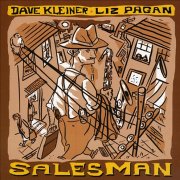 |
Salesman (2001, 41.32) ***/T |
|
| Love is as Big as a Horse Kings Highway Salesman The Burtons Mexican Rabbi The Other Side of That Rainbow The Dogs of Summer Mr. Bean |
Good Friday My Golden Age That's When You Die Here's to the Rocky Road |
|
Current availability:
Mellotron used:
Married couple Dave Kleiner and Liz Pagan's third album together, Salesman, features (I believe) Kleiner's wry observations on life, love etc., performed in the duo's inimitable style. Highlights? Depends on your sense of humour, but the title track, the ludicrous Mexican Rabbi and Good Friday (a.k.a. the crucifixion from the other side) stand out, at least lyrically.
Dave Amels plays what sounds like real Mellotron on two tracks, with clicky flutes on The Dogs Of Summer, although nothing audible on That's When You Die. Wacky American humour is both like, yet unlike wacky British humour (and absolutely nothing like wacky German humour, but that's another story). Both have their plus points, some of which are evident here. Worth a listen.
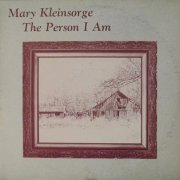 |
The Person I am (1980, 36.38) **/T |
|
| The Person I am I'll Never See You Again What to Do With Momma Poor Little Raindrop The Man in My Musicbox Sing My Song It Could Never Be You're Only Here for a While |
Listen to Me Boy Follow Me in Your Memories Zip-a-Dee-Doo-Da |
|
Current availability:
Mellotron used:
1980's The Person I am is at least the second album by Mary (now Dr. Mary) Kleinsorge, a Kansas-based singer-songwriter. The album specialises in sweet, balladic material that actually hasn't dated too badly, largely due to its renunciation of anything more complex than acoustic guitar, voice and occasional accompaniment, the one exception being the excruciating, whitey-boy funk version of Disney's Zip-A-Dee-Doo-Da that horribly closes the record. Best track? Possibly The Man In My Musicbox, with its musical box-faking glockenspiel work.
The Mellotron player is uncredited, but seems likely to be engineer Randy Wills, playing distant strings on opener The Person I Am and Sing My Song, plus cellos and strings on It Could Never Be, none of it to any great effect, to be honest. It seems that Dr. Mary sells the remaining copies of her albums through her website, if only on cassette, but I'd be hard-pushed to recommend this to any but the most fanatical of folk collectors.
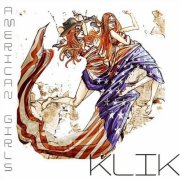 |
American Girls (2012, 32.17) ***/T |
|
| American Girl Glass House Bang Bang Love is a Gun Avenue Lemon Tree 29 Footsteps Eyeliner |
Hollywood One Question |
|
Current availability:
Mellotron used:
Floridians Klik play a form of modern, female-fronted alt.rock/metal, strong on melody, at its best (in my humble opinion, of course) on its heavier tracks, notably the opening kind-of title track, Glass House and Bang Bang. That'll be the first three tracks, then. The rest? Common-or-garden alt.rock (Avenue, 29 Footsteps), reasonable heavy-end-of-powerpop (Lemon Tree) and rather limp balladry (closer One Question).
Producer Sylvia Massy (presumably) plays her M400, with background strings on Love Is A Gun and One Question, the latter also utilising generic string samples for the stabby bits. Not the most exciting album ever, then, but has its moments.
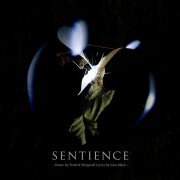 |
Sentience (2019, 43.14) ***½/½ |
|
| The Fall Black Snow Collapse Into the Dark Heart Vespering Bells Memoir Last Breath Night of Introspection |
Estranged At the Precipice |
|
Current availability:
Mellotron used:
Fredrik Klingwall (Anima Morte, Pixie Ninja, Loch Vostok) and Julia Black's 2019 collaboration, Sentience, is an intriguing album, combining elements of prog, ambient, pop, even jazz into a dreamscape of dark, heavily goth-influenced... Well, imagine atmospheric metal without metal guitars. That. While nothing here sounds especially out of place, nor does anything really stand out, but it might just be at its best on the proggy Memoir, Estranged and ten-minute closer At The Precipice, almost a microcosm of the album as a whole.
Klingwall plays one or more of the Roth Händle M400s, with a brief burst of strings on Black Snow, chordal strings on Memoir and pipe organ on Last Breath, although, given the real strings used throughout, it may well have been used elsewhere, too. Despite sounding little like 'trad' goth, this is definitely one for that person in your life who habitually wears black.
See: Anima Morte
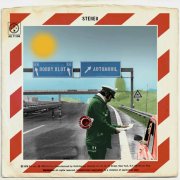 |
download (2022, recorded 2004) ***½/T Automobil |
Current availability:
Mellotron used:
Bobby Klot? Since Mattias 'Änglagård' Olsson has posted about this odd little track on Facebook, I suppose that makes the story at least semi-public, so... He recorded this in 2004, the year after the brief Änglagård reformation, with which I was tangentially involved. Kraftwerk were played a good deal in the car on the way down through Germany, so it's hardly surprising that Automobil sits at the exact halfway point between homage and piss-take, Mattias' vocoder use, deadpan Swedish-language vocals and synth effects (spot the 'car horn' effect on the intro) sending up Autobahn, albeit lovingly, while I'm sure I heard lyrical references to Karl Bartos and Trans-Europe Express. As he says on its Bandcamp page, "An hommage to Roadtrips in Europe".
Mattias plays Mellotron, with a brief string part near the beginning and a handful of choir chords towards the end. It seems we're lucky to have this at all; Mattias believed it lost, until a copy turned up, nearly twenty years after its recording. Incidentally, note the sleeve design; for once, I haven't cropped the original image, to retain its 'battered picture bag' effect. Have a look at the full-size version on Bandcamp: not only is the copyright warning spot-on, but is that, just possibly, a member of Kraftwerk in the driver's seat? And as for Bobby Klot... Who knows?!